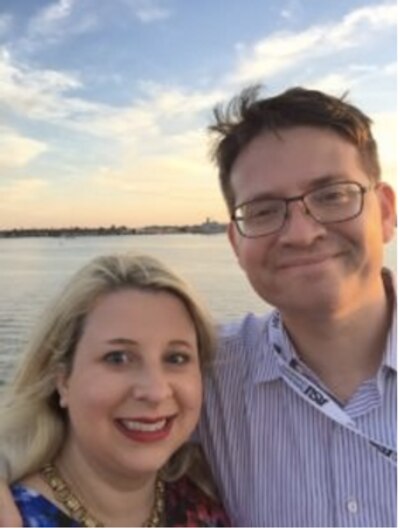Navigating a career path used to be like riding a steamship — a slow and steady trip to a certain future, said Erin Mote, a co-founder of Brooklyn Laboratory Charter High School. Today, it more closely resembles whitewater kayaking, she said, full of rocks and choppy waters.
Yet, Mote and her husband, co-founder and executive director Eric Tucker, have a plan to help their students learn to paddle the waves. They have decided to open a charter high school in 2017, as a planned extension of their current Brooklyn middle school.
With their vision newly approved by the Board of Regents in June, Mote and Tucker join a growing number of charter school leaders who are branching out into serving older students. (The vast majority of charter schools are still elementary or middle schools.)
Their approach is ambitious. While some charter schools have come under fire for serving too few high needs students, Brooklyn Laboratory plans to recruit an equal or greater percentage of low-income students, students with disabilities, and English Language Learners than the district in which it is located. The founders also plan to use a weighted lottery to select for those students if necessary. Despite serving high-needs students, their goal is for every student to aim for selective four-year colleges.
To make that happen, Mote and Tucker say, they have to ensure that students have the structure and rigor they need to excel, while also fostering the independence the students will need for life after high school.
They won’t sugarcoat the difficulty of passing an Advanced Placement exam, but they reject the common charter school label “no excuses” to explain their culture of high expectations. They also hesitate to use the word “grit,” a trait often invoked to explain what students need to be successful, and instead prefer the term “persistence.”
Here’s how Mote and Tucker are thinking through these and other issues as they venture into high school education. (The interview has been condensed and lightly edited for clarity.)
You say that every student should aim for selective four-year colleges. Why say “selective” colleges, and why have every student aim for a four-year college?
Tucker: The reality is that the types of jobs that would allow you to take care of your family and to compose a meaningful adult life increasingly have requirements that look very similar to the [qualities] a Caltech or a University of Michigan cares about. We’re not making a four-year-college-for-all argument, we’re making the argument that durable, public institutions need to be committed to serving all students and need to set their sights high.
Mote: When we think about what today’s work world looks like, when our grandparents started out it was like a steamship. You sort of got on the steamship, set the direction, and you just went. And at the end of that journey, you likely walked away with a pension and you had been working at the same job for 50 years. Then there’s our parents, where it was more like a sailboat. You still got where you wanted to go and there was still a sort of manageable pathway there. I think more and more for our scholars today, it’s like being whitewater kayakers. The world is changing so quickly and the currents are rushing past you, and there’s big waves or rocks in your way. We really think about how do we, in our students, engender not just the academic skills but the ability to navigate that complexity?
What if you have a student who’s not ready for a selective four-year college?
Mote: We want to pitch our school so that our scholars have the option of a four-year selective university. Let’s take Malia Obama, who has decided to take a gap year. She goes to Sidwell Friends in Washington, D.C., one of the best schools in the country. Sidwell holds this bar of a four-year selective university, and it’s not that they’re saying to her, ‘It’s a bad decision to take that gap year.’ She has every option in the world and I think that’s what we want to narrate for our students, that they have every option in the world.
Maybe that means that they get into [New York University], but that they decide to take a year and take coding classes at [the technology training center] General Assembly. But they have the option to walk into NYU, and that door isn’t closed as a factor of where they were born, what zip code they live in, or what high school they went to.
What makes you so committed to serving high-needs students?
Mote: When [Eric] was in middle school, he dropped out of middle school. When he got to Brown, he was diagnosed with dyslexia, dysgraphia, and attention deficit disorder. Traditional schools didn’t understand his condition as a learner. It’s a very personal thing when it comes to serving complex students.

As space becomes more and more precious in downtown Brooklyn, the need to have high-quality, non-selective seats at the high school level is really important. Brooklyn Tech’s a great school and we love having them as a neighbor, but I think we’re all really aware of the challenges that selective seats can provide. Brooklyn Tech seats are never going to be open only to students that live in this neighborhood.
How do you plan to do both serve high-needs students and prepare them all for college?
Mote: If you look at what we’ve been able to do at our middle school, we’ve been able to do that and close the achievement gap. It’s a huge undertaking, but I think we have the team, the staff, that’s dedicated to moving the needle for these kids and we have the track record to do it. I’m confident — can you tell?
You hesitate to use the word “grit” to describe a quality you want to teach your students. What are you teaching instead?
Mote: I hesitate to use that word because I think that so many of our scholars already have grit. We’re not teaching them grit, we’re teaching them persistence. I think those are different things. Grittiness comes from being able to survive and to keep going. Persistence is a different set of skills; it’s continuing to do the same things over and over again until you master it.
You are advocating a warm yet demanding learning environment. What does that mean and how does it differ from “no excuses”?
Tucker: I’d say our approach is positive discipline and youth development, and that entails clarity, consistency and transparency, so our scholars and families know what to expect. But, particularly in high school, you need to have a deliberate release towards independence. You need to, by 11th and 12th grade, be closely simulating the types of independence, student ownership and responsibility that set young people up to thrive in what’s generally a pretty unstructured time in college.
We are firm believers in high expectations, and in no-nonsense nurturing, and in authentic relationships. Pretending that [Advanced Placement] exams are less challenging than they are doesn’t do anybody any good. Pretending that we can take the foot off the accelerator on how high our expectations are for attendance, or for homework completion, or for participating in class, doesn’t set students up for future success.
What do you think are some of the biggest challenges of opening a high school as opposed to a middle school?
Tucker: When you think about a great high school experience, you think about a student competing on a debate team, or a robotics team, or in a Google science fair context, while having a great course of study. Those things exist in our society for some students at selective high schools or in affluent suburban high schools. The commitment that our city needs to make is that every student deserves access to a high school education that genuinely prepares them for the best colleges. It means that they need to understand what it means to work at a law firm, or at the U.N., or at a tech startup, or at a university research lab.
Mote: For many of our students, they would be the first member of their family to go to college. [We will be] helping our scholars both navigate that guidance and advisory process, but also working with our families so that they understand, appreciate and support the young people.
When Eric and I had originally designed the budget and the charter, we had said, ‘Oh we’ll do guidance at 11th grade.’ After talking with our families, our scholars, our communities, it became really clear that we need to think about guidance right now, like in the eighth grade.
Eric and I live in this community. We see our kids at Target. We’re deeply committed to the diversity of our community being represented in our students’ population and knowing that really, truly means embracing our mission, our values and our vision, around serving every student. And that often means serving their family, too.

